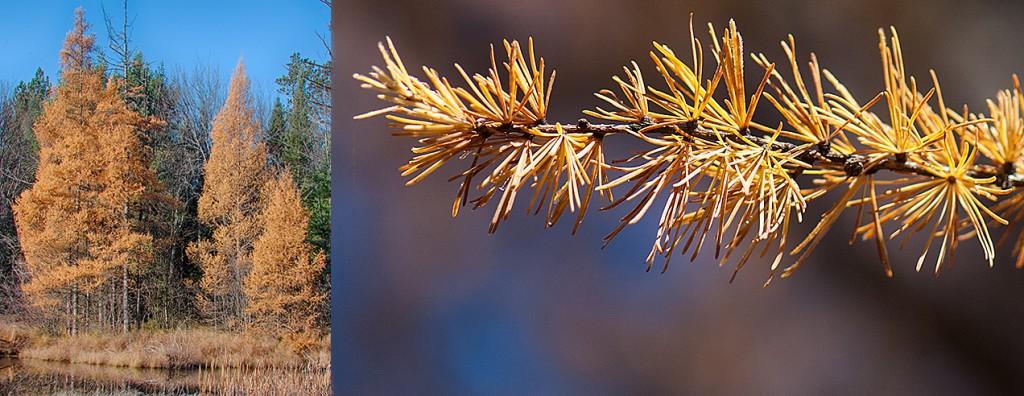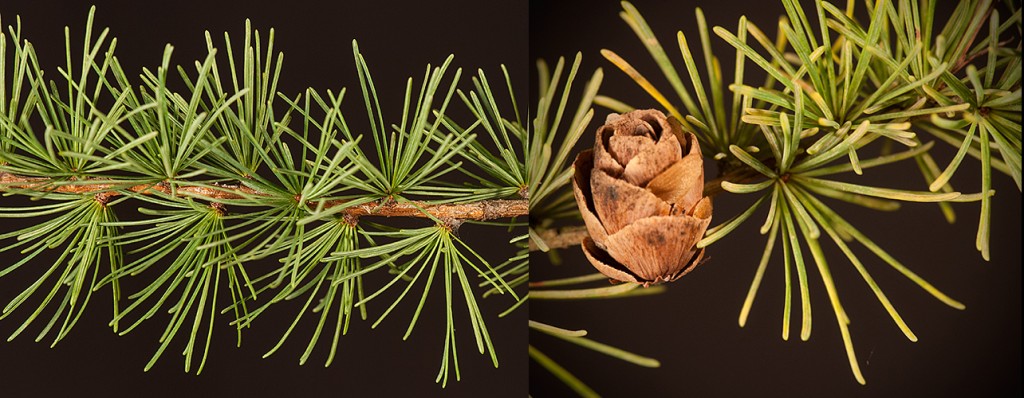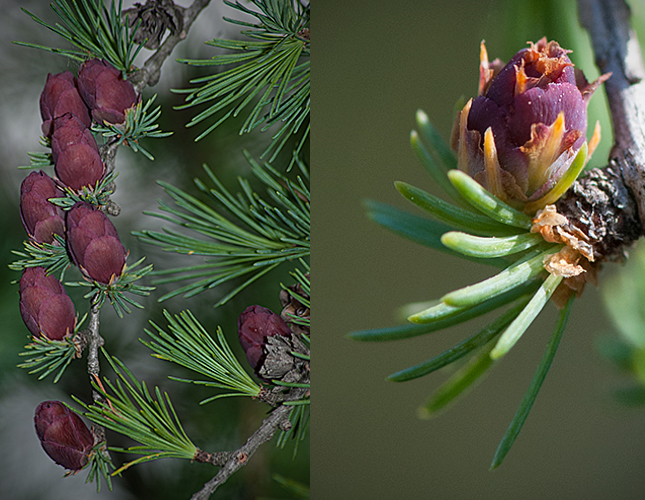At an event distributing white oak saplings for the bicentennial of Oakland County I was asked, “Are the large Tamaracks in Oakview Cemetery native?” Oakview is a century-old cemetery in Royal Oak. The back of the property was undeveloped woods when I was a boy. Tamaracks were harvested in Royal Oak township for the ship building industry in the late 1800s, but I did not know of any Tamaracks remaining in the city. Notes from the 1817 land survey seem to indicate that the cemetery land was always dry, but a swampy area was just to the southeast. Geological maps show a sandy beach ridge running across the property.
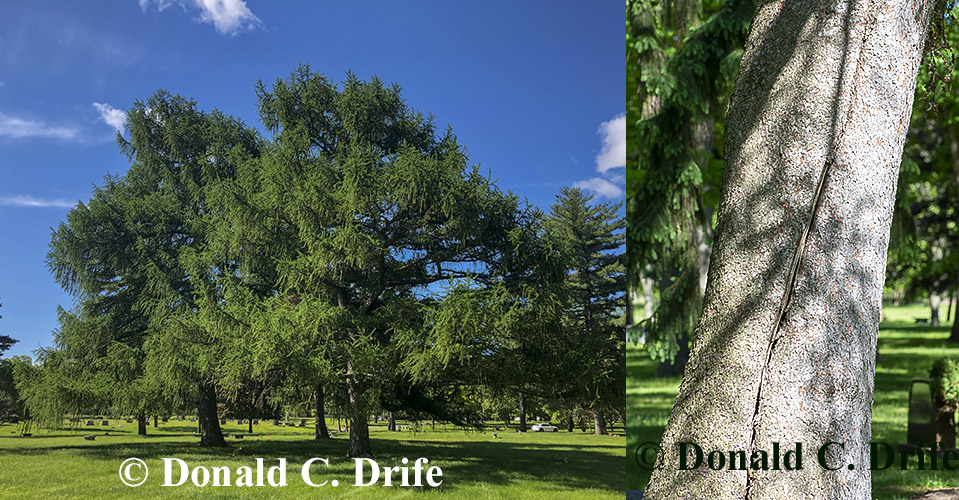
I followed the directions and found the trees quickly by driving the center road to the west. Once I saw the shape of the trees, I knew they were European Larch (Larix decidua). This is also called European Tamarack. It is similar to our native Eastern Tamarack (Larix laricina). See my blog post.
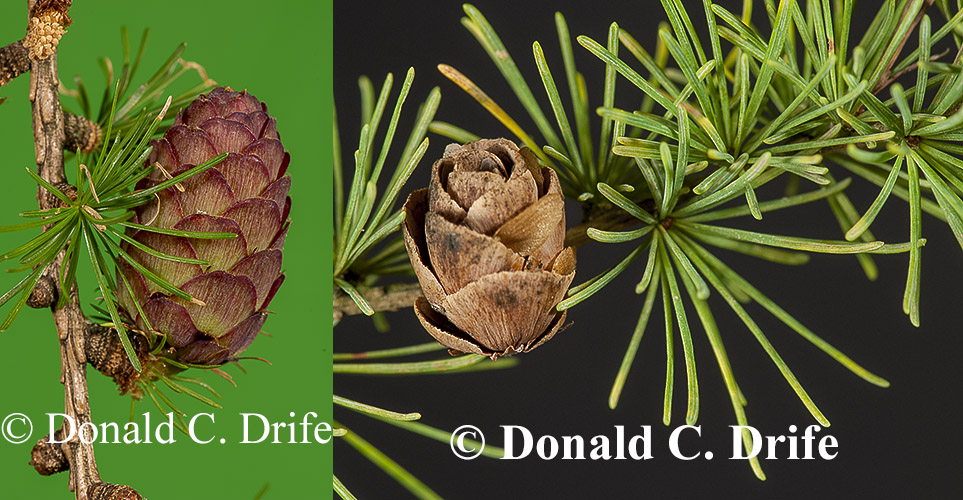
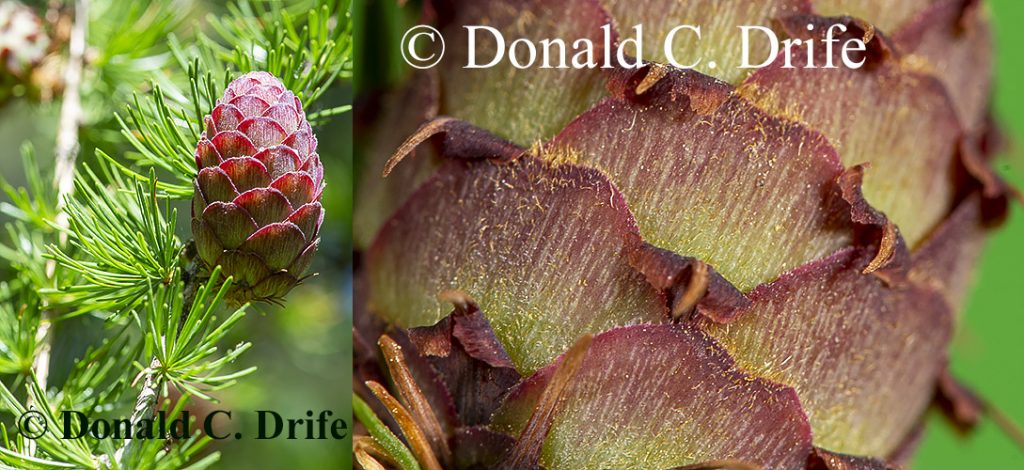
Just like our native Tamarack, European Larch needles turn a bright yellow in the fall before they are shed for the winter. European Larch has bigger cones with 35-50 scales that have short hairs. Our native tamarack has less than 20 scales and they are hairless. European Larch needles normally are longer than 2.5 cm [1 inch]. They are shorter on our native Eastern Tamarack. The twigs on the European Larch are yellowish. Our Native Tamarack has brownish twigs that turn gray with age.
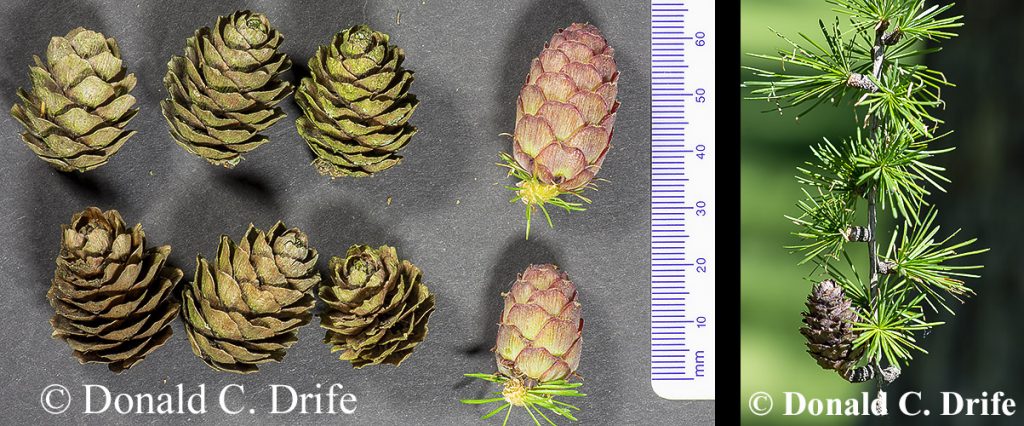

I walked around the cemetery looking at other trees. It has some large Black Oaks and nice White Pines. Just below the crest of the beach ridge I found an Eastern Tamarack with a trunk 2-feet in diameter. I think it was planted on the ridge because Eastern Tamarack does not grow on dry sandy sites.
It was interesting to walk the cemetery, looking at old trees. There are not too many sites where you can compare the two Tamarack species.
Copyright 2020 by Donald Drife
Webpage Michigan Nature Guy
Follow MichiganNatureGuy on Facebook

